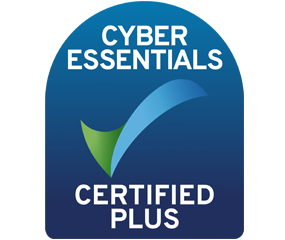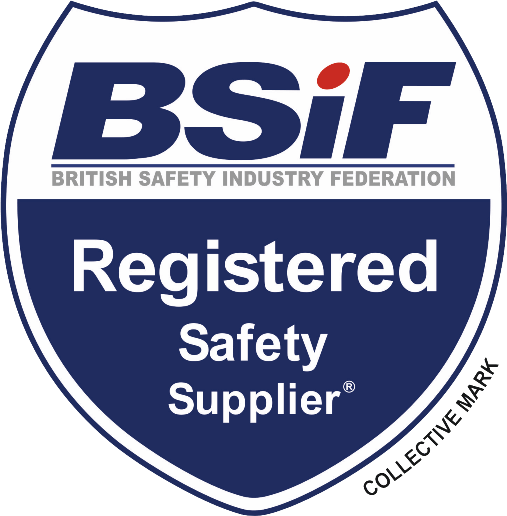Standards Guide
An impartial and factual guide to how Safety Footwear is classified in Europe.

EN ISO 20345
This is the standard that all styles classified as
‘safety footwear’ are tested to.
The 2022 addition cancels and replaces the 2011 addition, which has been technically revised.
It is important to note that all current 2011 certificates and marked products remain valid until their expiry date.
EN ISO 20345:2022 + A1:2024
Testing your Toecaps
All safety footwear has Toe Protection providing 200 joules of impact protection (falling objects) and 15,000 newtons of compression protection (crushing).
SB – Any product that is classified as SB only has a protective toecap.
Slip Resistance
All safety footwear certified to EN ISO 20345:2022 is tested to a mandatory basic level of slip resistance. The test uses ceramic tiles with Sodium Lauryl Sulphate (soap) and tests forepart and heel slip.
An additional claim for outsoles that perform to a higher level of slip resistance can be made and an SR symbol can be used. The additional SR level test uses ceramic tiles with Glycerol and tests forepart and heel slip.
Perforation Resistance
A protective midsole is used when there is danger of perforation from nails or other sharp objects.
P – Metal inserts tested with a 4.5mm nail and 1,100 newtons of pressure.
PL – Composite inserts tested with a 4.5mm nail and 1,100 newtons of pressure.
PS – Composite inserts tested with a 3mm nail and 1,100 newtons of pressure.
EN ISO 20345:2022 Additional Classifications
Safety footwear has many additional classifications that can form an essential part of a company’s risk assessment.
A – Antistatic between 0.1 and 1000MΩ.
AN – Protection from impact in the ankle area.
C – Partially conductive Electrical Resistance ≤100Ω
CI – Insulation of outsole against cold: 30mins at -17˚C with loss of heat at ≤10˚C.
E – Energy Absorption of the seat region. Energy to be absorbed to be ≥20j.
FO – Fuel oil resistance – this now optional. Resistance of the outsole to hydrocarbon-based oils, petrol etc.
HI – Insulation of outsole against heat: 30mins at 150˚C with increase in temperature no higher than 22˚C.
HRO – Resistance of the outsole to brief direct contact with heat up to 300˚C.
LG – A ladder grip on the outsole that meets specific dimensional requirements.
M – Protection in the metatarsal area against up to 100 joules impact energy.
SC – A scuff cap with abrasion resistance in the toe area to protect from scrapes and bumps.
WR – No water detected inside the footwear after a minimum of 80mins.
WPA – The breathability of the upper materials.
EN ISO 20345:2011
All current 2011 certificates and marked products remain valid until their expiry date.
Testing your Toecaps
All safety footwear has Toe Protection providing 200 joules of impact protection (falling objects) and 15,000 newtons of compression protection (crushing).
SB – Any product that is classified as SB only has a protective toecap.
Slip Resistance
SRA – Slip resistant on ceramic tile floor with SLS.
SRB – Slip resistant on steel tile floor with glycerol.
SRC – Slip resistant on ceramic tile floor with SLS + on steel tile floor with glycerol.
SRA+SRB = SRC
EN ISO 20345:2011 Additional Classifications
A – Antistatic between 0.1 and 1000MΩ.
AN – Ankle Protection: 10j impact with mean transmitted force to be ≤10Kn and no single result ≥ 15kn.
C – Conductive : Electrical resistance ≤100kΩ.
CI – Insulation against cold:30mins at -17◦C at ≤10˚C.
CR – Cut resistant Upper: Cut resistance index to exceed 2.5.
E – Energy Absorption of the seat region. Energy to be absorbed to be ≥20j.
FO – Fuel Oil Resistant outsole.
HI – Insulation against heat: 30 mins at 150˚C at ≤10˚C.
HRO – Heat Resistant Outsole compound: Shall withstand 300˚C for 60 s.
M – Metatarsal Protection: 100J impact energy (NOT EN ISO 20347).
P – Penetration Resistant Outsole: Penetration force ≥ 1100N.
WR – Water Resistant Footwear (class 1 only).
WRU – Water resistant Upper leather (class 1 only).
Specialist classifications
Our most technical performance footwear for the harshest working environments.
ASTM F2413-24 | EH Certified
Electrical Hazard footwear is used to protect wearers from up to 18kV Electrical risks. It’s intended as secondary protection equipment to be used in addition to other Electrical Hazard Equipment i.e. Gloves and Grounding apparatus and not for live working.
EN 61340-4-3:2018 | ESD Certified
ESD Compliant footwear is used to prevent damage to electronic components via an Electrostatic discharge.
BS EN 17249:2013 | Chainsaw Protection Boot
Below Classification: 16 metres per second (36 mph) (3150 feet per minute) Class 1: 20 metres per second (45 mph) (3937 feet per minute) Class 2: 24 metres per second (54 mph) (4724 feet per minute) Class 3: 28 metres per second (63 mph) (5512 feet per minute).
EN ISO 20349:2017+A1:2020 | Certified Protection Against Thermal Risks and Molten Metal Splashes
Any product that has passed the appropriate test using molten metal is certified with the Wg/Fe/Al standard. Wg = Resistance to molten metal splashes (Welding Boots) Fe = Resistance to larger quantities of molten Iron (Foundry boots) Al = Resistance to larger quantities of molten Aluminium (Foundry boots).
EN ISO 13832-2:2018 Chemical resistance Certified
Chemical splash resistant safety footwear to protect the wearer from limited contact with specified corrosive chemicals.


